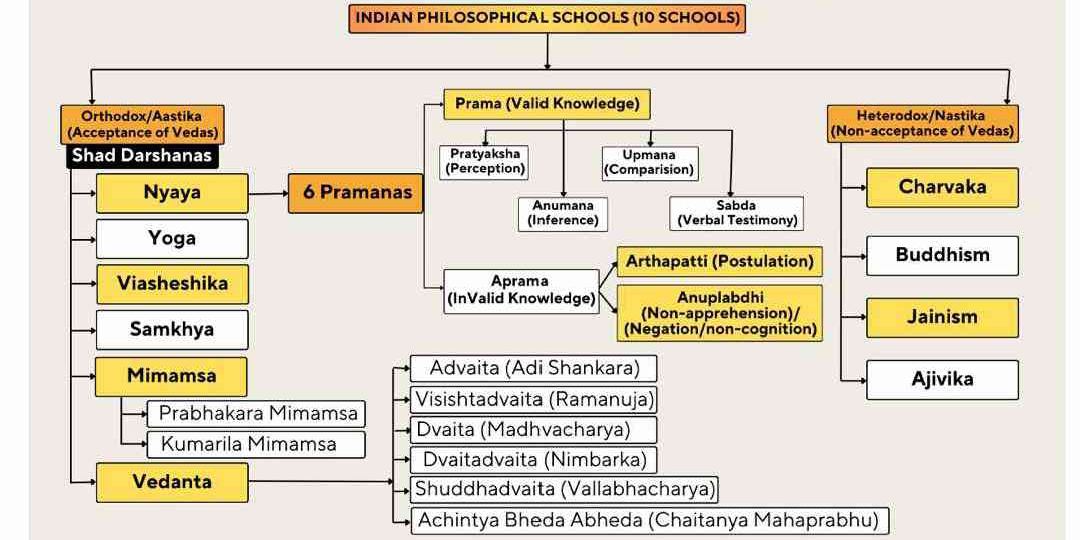Indian philosophical schools chart

Understand the Problem
The image presents a hierarchical chart of Indian philosophical schools, categorized into Orthodox/Aastika (those that accept the Vedas) and Heterodox/Nastika (those that do not accept the Vedas). It further breaks down these schools and their associated pramanas (sources of valid knowledge).
Answer
The ten Indian philosophical schools are divided into Orthodox/Aastika (Nyaya, Yoga, Vaisheshika, Samkhya, Mimamsa, and Vedanta) and Heterodox/Nastika (Charvaka, Buddhism, Jainism, and Ajivika).
The ten Indian philosophical schools are divided into two main categories: Orthodox/Aastika (those that accept the Vedas) and Heterodox/Nastika (those that do not accept the Vedas). The Orthodox schools consist of Nyaya, Yoga, Vaisheshika, Samkhya, Mimamsa, and Vedanta. The Heterodox schools consist of Charvaka, Buddhism, Jainism, and Ajivika.
Answer for screen readers
The ten Indian philosophical schools are divided into two main categories: Orthodox/Aastika (those that accept the Vedas) and Heterodox/Nastika (those that do not accept the Vedas). The Orthodox schools consist of Nyaya, Yoga, Vaisheshika, Samkhya, Mimamsa, and Vedanta. The Heterodox schools consist of Charvaka, Buddhism, Jainism, and Ajivika.
More Information
The terms "Astika" and "Nastika" are used to differentiate schools based on their acceptance or rejection of the Vedas as a source of valid knowledge. The six orthodox schools are also known as Shad Darshanas.
Tips
It is important to remember that the primary distinction between these schools lies in their stance on the authority of the Vedas.
Sources
- Major schools of Indian Philosophy - philosophydiagrams.com
- Indian philosophy - Wikipedia - en.wikipedia.org
- Schools of Indian Philosophy - Drishti IAS - drishtiias.com
AI-generated content may contain errors. Please verify critical information